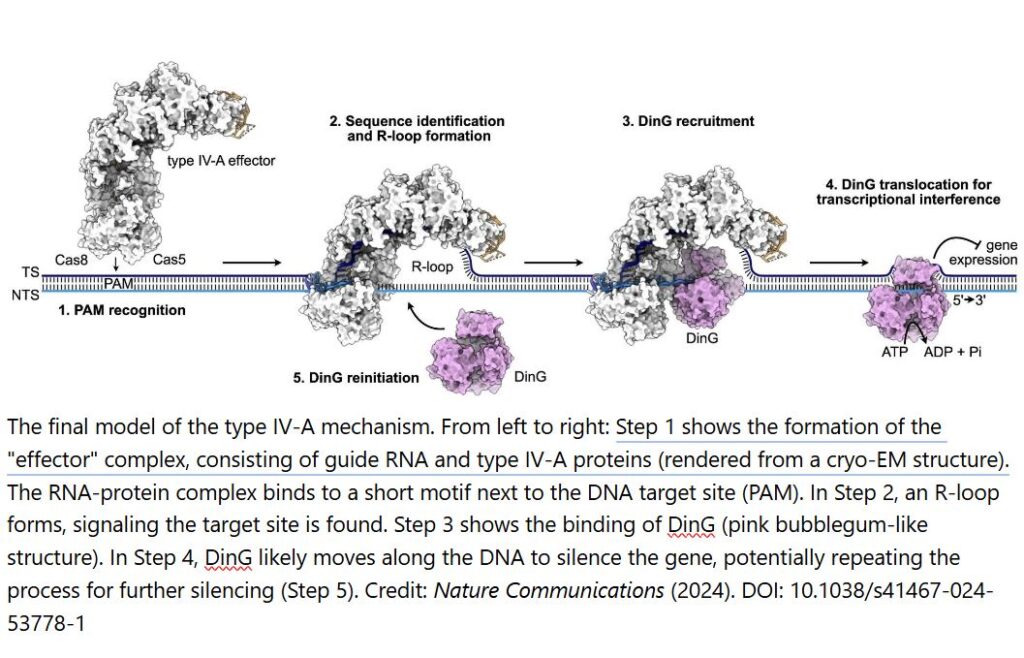
Scientists from Vilnius University’s (VU) Life Sciences Center (LSC) have discovered a unique way for cells to silence specific genes without cutting DNA. This research, led by Prof. Patrick Pausch and published in the journal Nature Communications, reveals a new way to silence genes that is akin to pressing a “pause” button on certain genetic instructions within cells.
The research team, including doctoral student Rimvydė Čepaitė, Dr. Aistė Skorupskaitė, undergraduate Gintarė Žvejyte and Prof. Pausch at Vilnius University, working alongside an international team, uncovered how cells use a specific system to locate and silence unwanted DNA. This system, which could eventually enable safer gene modifications, shows promise for repairing faulty genes that cause diseases.
“Unlike the well-known CRISPR gene-editing system, often described as molecular ‘scissors,’ the newly studied type IV-A CRISPR system does not cut genes. Instead, it uses an RNA-guided ‘effector’ complex to recruit an enzyme called DinG, which moves along DNA and silences targeted genes in a more subtle manner,” explains Prof. Pausch.
According to the researcher, it is fascinating how the system recognizes the precise location on the DNA to begin working. “The system uses two proteins (Cas8 and Cas5) to find a very short sequence motif adjacent to the RNA guide’s complementary target DNA. Once both proteins recognize this short sequence, they melt the double-stranded DNA for target sequence interrogation.”
A critical component in this process is the formation of R-loops—open DNA structures where RNA binds, signaling the system to initiate gene silencing.
“The ‘R’ in R-loop stands for RNA. All DNA-binding CRISPR-Cas systems use this structure to probe the DNA sequence and identify the correct target site. Stable R-loops only form in the presence of a DNA sequence that sufficiently matches the guide RNA. The R-loop essentially tells the system when it’s appropriate to start silencing a gene,” states the research professor.
In his words, the DinG enzyme further enhances gene suppression by unwinding the DNA strands, allowing the system to exert its effect over a longer DNA sequence.
This discovery opens doors to future applications in genome editing without the risk of DNA cuts, which could lead to more precise tools for research and biotechnology. “Our system’s unique ability to traverse DNA without cutting genes is intriguing for advanced gene-editing applications,” adds Prof. Pausch, who believes this new approach could benefit society by enabling safer genetic modifications. https://phys.org/news/2024-11-crispr-gene-silencing-doesnt-dna.html









Recent Comments